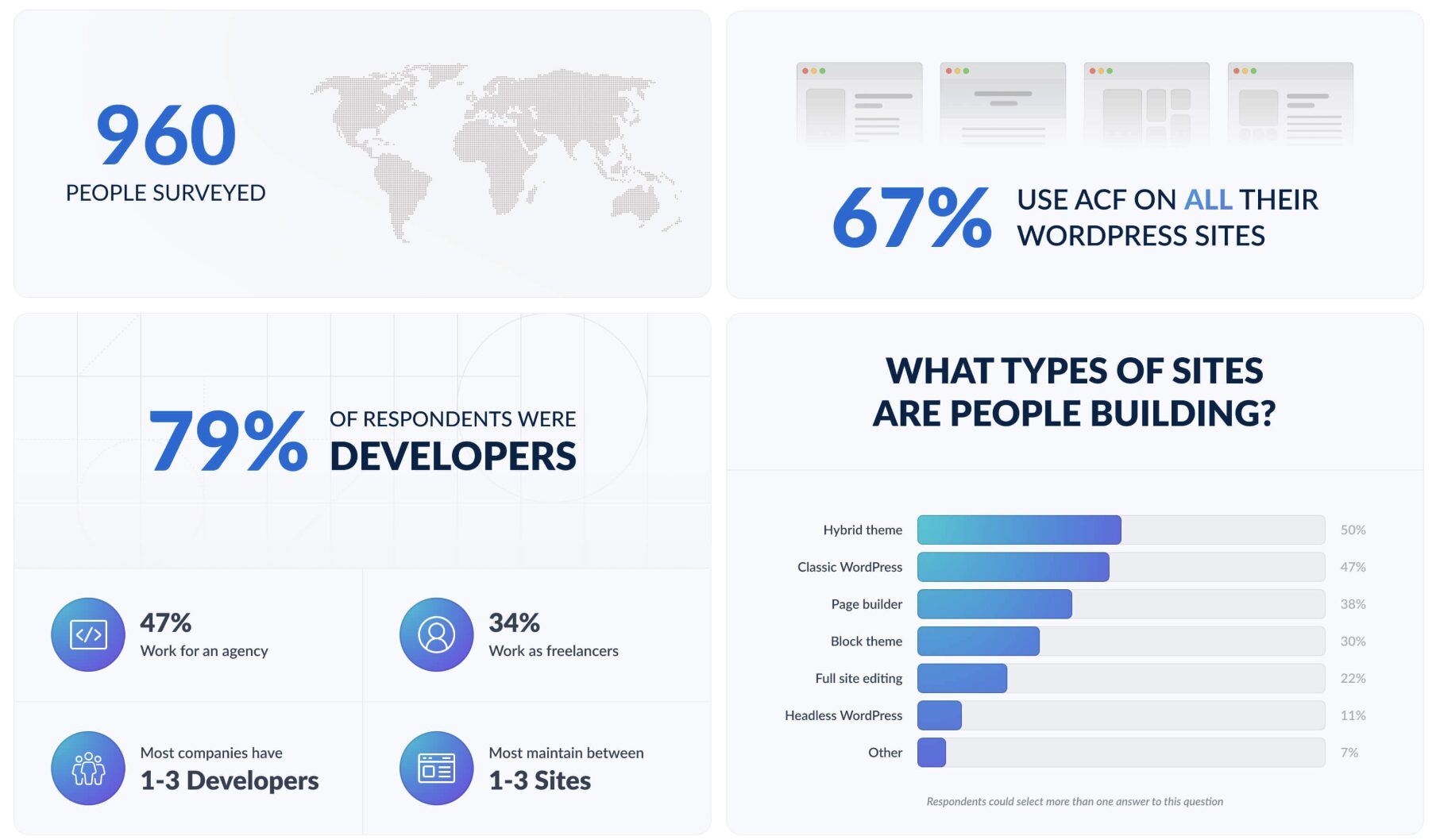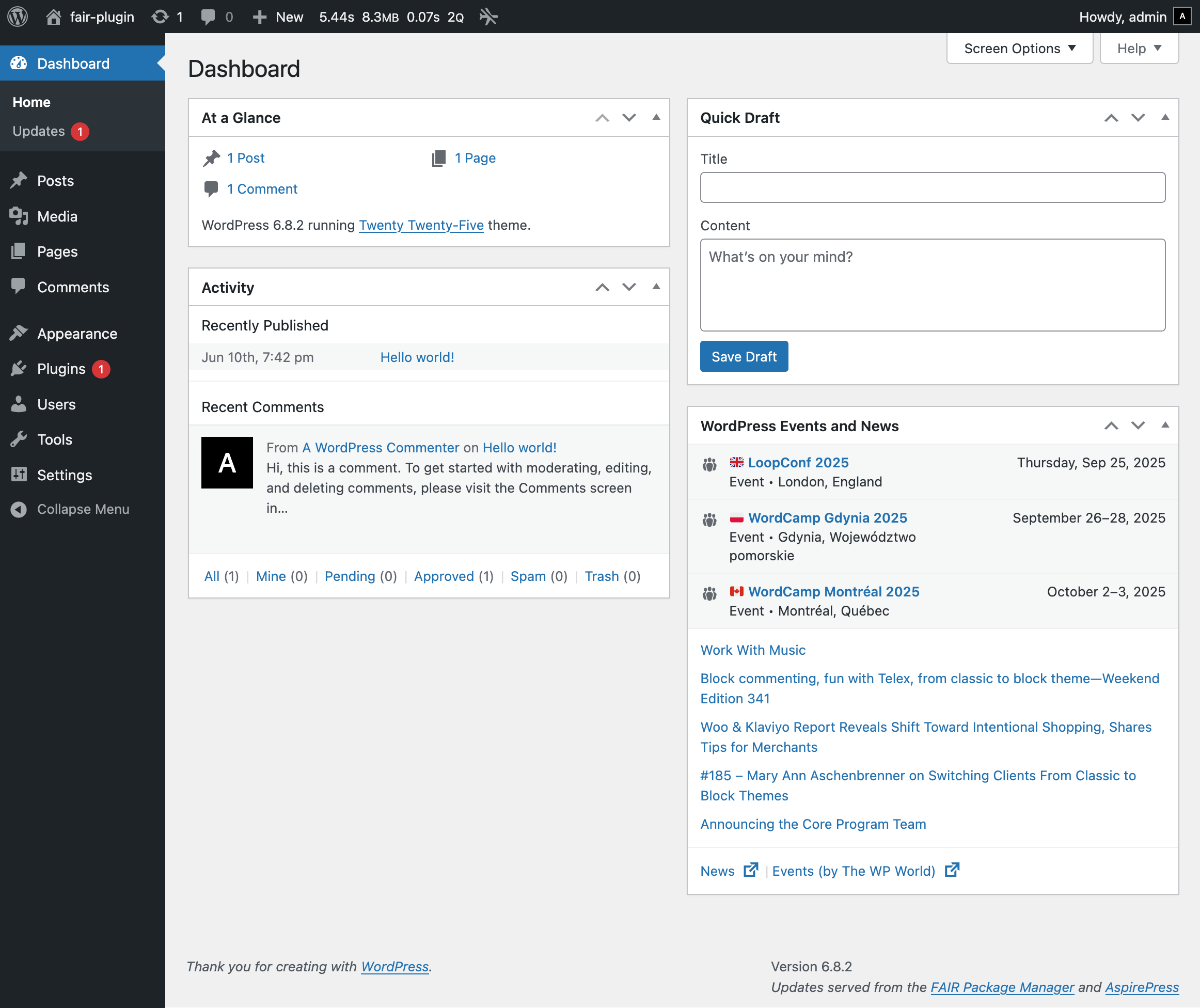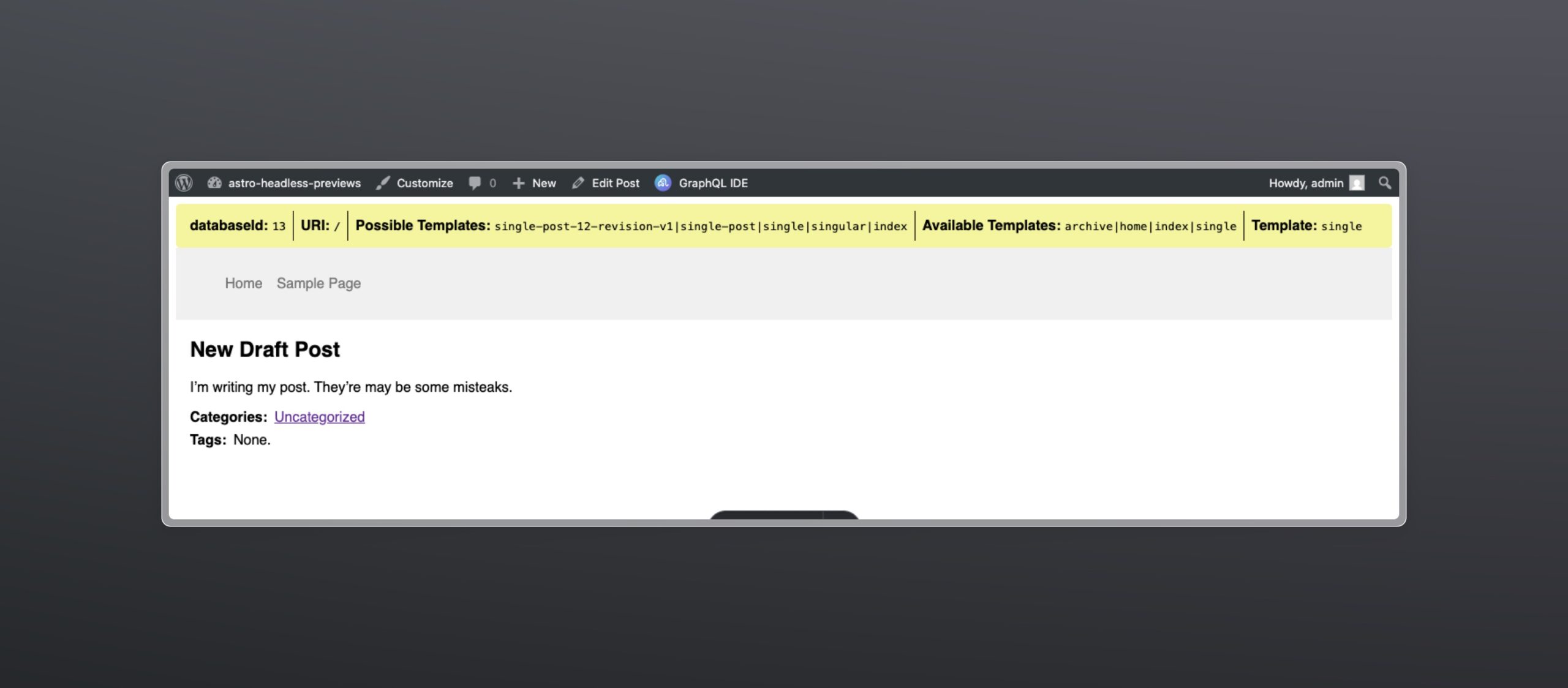
In this issue of Delicious Brain Bytes, we dive into the game-changing FAIR 1.0 decentralized package manager, explore the key data from the ACF Annual Survey, see how one developer hosted a functional website on a disposable vape, and much more!
Developer Blog Roundup: Scaling Plugins, Toggling Dark Mode, and 6.9 Presets
The WordPress Developer Blog has been hitting it out of the park lately, delivering a stream of essential guides and technical deep dives that cut right to the core of modern WordPress development. Here’s a look at three recent posts you shouldn’t miss:
Implementing Namespaces and Coding Standards in WordPress Plugin Development
For any developer looking to move beyond simple plugins, Troy Chaplin’s guide on implementing proper namespacing and coding standards is a must-read. Chaplin walks you through practical steps for making your codebase scalable, maintainable, and ready for team collaboration. The tutorial covers setting up PSR-4 autoloading with Composer, organizing plugin functionality into purpose-driven classes, and enforcing consistent code styles across PHP, JavaScript, and CSS using modern linting tools. This guide is all about building a robust foundation that avoids conflicts and saves you time in the long run.
Building a Light/Dark Toggle with the Interactivity API
Tired of wrestling with external libraries to add a light/dark mode toggle to your block theme? Justin Tadlock took on the challenge of building a fully-featured toggle using only modern CSS and native WordPress APIs. This guide is a masterclass in leveraging the Interactivity API to manage state (persisted via user meta or cookies) and utilizing the often-overlooked functionality of the core Button block to create the toggle element. It’s an elegant, future-proof solution that shows the true potential of the Interactivity API for adding dynamic behavior without writing a custom block.
Border Radius Size Presets in WordPress 6.9
In another essential post, Justin Tadlock gives theme developers a sneak peek at one of the best new theme developer tools coming in WordPress 6.9: border radius size presets. Tadlock shows you how to define reusable size arrays via the new settings.border.radiusSizes property in your theme.json file. These presets are automatically converted into CSS custom properties that you can use in your own styles, block style variations, or allow users to select via the UI. The guide dives into defining multiple sizes, how the UI changes for large lists of presets, and the limitations to watch out for as you prepare your themes for the upcoming release.
ACF Annual Survey 2025: Key Data for Developers
The results from this year’s ACF Annual Survey are in, providing professional developers with a valuable snapshot of the ACF user base and the current state of WordPress development. With over 900 community members participating, the data offers crucial insights that will directly inform ACF’s future roadmap.
- Role and Workforce: “Developer/Engineer” remains the dominant role at just over 79%, with the majority of users (53.11%) working in small teams of 1 to 3 people.
- Site Architecture: The use of “Hybrid themes” (457 responses) edged out “Classic WordPress” themes (432 responses) for the top spot, showing the continued evolution of theme adoption.
- Block Editor Preference: When building custom content for the Block Editor, ACF Blocks are the clear favorite, with over half of respondents (52.26%) choosing them, far outpacing the use of native WordPress blocks or custom React blocks.
- AI Adoption: A substantial 75.93% of respondents reported leveraging AI primarily for “Development/Code.”
The survey highlights the deep reliance on ACF as a cornerstone tool, with over two-thirds of respondents rating it as “Very important” to their workflow.
To see the full breakdown of field usage, AI sentiment, and the maturity of the ACF user base, dive into the complete results here.

FAIR 1.0 Arrives: Decentralized WordPress Package Management is Here
The working group for Federated And Independent Repositories (FAIR) has announced the 1.0 Milestone Release of its package manager, enabling WordPress developers and site owners to find, verify, and install plugins from independent sources outside of the central WordPress.org repository. This release marks the first time the system’s projects have been integrated into a working ecosystem.
FAIR was created with the goal of reducing reliance on WordPress.org by giving site owners more control over where their software comes from and allowing developers to distribute plugins without a central gatekeeper. The FAIR team noted that the release “shows that FAIR is not just a proposal or a protocol. It is a working ecosystem, and it is ready for others to build on.”
The 1.0 release includes a full stack of components that enable this decentralized experience. The FAIR Plugin allows a WordPress site to install and update software from the FAIR network. It performs ED25519 signature verification on FAIR packages for security and minimizes data sharing to support privacy regulations. The system enables installation and updates of software from both WordPress.org (via a mirrored index) and independent FAIR sources. Furthermore, the system introduces security safeguards such as cryptographic signatures for every package and a trust model inspired by Bluesky’s layered, composable moderation architecture. Finally, the Mini-FAIR Repo plugin allows a developer’s own WordPress site to act as a FAIR-ready connector for publishing their plugins or themes hosted on services like GitHub or GitLab.

From Puff to Page: Hosting a Website on a Disposable Vape
Bogdan Ionescu has managed to host a fully functional website on a device that many people literally throw away. He recently detailed the project on his blog.
Ionescu was inspired after discovering that some modern vapes contain surprisingly capable ARM Cortex-M0+ microcontrollers with a modest 24KB of Flash storage and 3KB of RAM. Seeing a “blazingly fast web server,” he got to work.
The core challenge was getting the chip online. Ionescu leveraged an embedded systems technique called semihosting to communicate with a debugger, emulating a dial-up modem connection using the Serial Line Internet Protocol (SLIP). After some critical performance tuning—switching from single-character I/O to a cached ring buffer—he dramatically slashed load times.
The final result is a functional web server that successfully hosts a site, proving that even “disposable” hardware can be repurposed for the open web.
For the full technical dive, you can see Ionescu’s blog post here

Marsland Highlights Top Features Coming in WordPress 6.9
In a video roundup, prominent WordPress educator Jamie Marsland quickly covered his favorite new features currently slated for the WordPress 6.9 release on December 2nd, 2025.
Marsland highlighted how WordPress 6.9 is laying the groundwork for true collaboration by introducing block-level commenting, allowing editors and writers to leave and resolve comments directly inside the editor. He also noted a major quality-of-life improvement with enhanced template management, which is expected to allow custom templates to persist when switching between block themes—a long-requested feature.
For builders, the release introduces block hiding (keeping content editable in the back end but hidden on the front end) and several new blocks, including a versatile Accordion Block and the dynamic Stretchy Block, which automatically fills its container for hero sections. Finally, developers will benefit from the new Abilities API, which is designed to let AI interact with plugin functionality directly, opening up new pathways for automation and custom reports.
Watch Marsland’s full 250-second overview here.

Beyond Code: Developers Debate the Most Underrated Web Dev Skills
While the web development community often fixates on the latest frameworks and technical debates, a recent Reddit thread sparked an interesting discussion about the underrated skills that truly set a professional developer apart.
The thread, titled “What’s the most underrated web dev skill that nobody talks about?”, quickly filled with responses focused on non-coding competencies. Key underrated skills cited by developers included writing clean commit messages and good PR descriptions, knowing when not to over-engineer a solution, and mastering browser developer tools beyond basic inspection. These are the crucial, often invisible abilities that lead to scalable projects and smoother team workflows.
These insights align perfectly with the understanding that sustained success requires more than just technical brilliance. If you’re looking to sharpen these non-coding competencies, we recently took a deep dive into the subject.
For more insights into the interpersonal, communication, and organizational skills that bridge the gap between technical execution and project triumph, read our guide on Essential Soft Skills for WordPress Developers. You can join the original Reddit discussion here.
Astro + WordPress: Post Previews
Historically, previews for headless WordPress have been quite complicated. Gatsby and Faust.js have both implemented their own solutions, but required specific buy-in on those solutions. To alleviate this, WP Engine’s headless OSS team released the HWP Previews plugin for headless WordPress that sets you up to do previews without using Faust or Gatsby. Now, you don’t have to use Faust to give your publishers the preview experience they expect in WordPress. This plugin overrides WordPress’s default preview behavior and allows you to control how previews are requested (URL, path, query params, etc.).
In this article, Alex Moon discusses how to implement the HWP Previews plugin functionality on the framework side, i.e., Astro. The article covers WPGraphQL, authentication, and previews.

Using Cloud Storage for WordPress User-Generated Content
User-generated content is the proverbial double-edged sword. While it’s a powerful engine for engagement, it’s also a significant technical liability. User uploads are often unpredictable, unoptimized, and can consume server disk space and bandwidth at an alarming rate. This unchecked growth directly impacts site performance, inflates hosting costs, and complicates essential maintenance tasks like backups and migrations. Managing this requires an architecture designed for scale.
In this article, we look at the strategies for offloading user-generated media to dedicated cloud storage, including the foundational techniques for handling simple uploads, advanced methods for integrating with complex community plugins, and the critical best practices for managing file optimization and privacy in a UGC-driven environment.

What’s the most interesting news you’ve come across recently? Pop by Twitter and let us know.